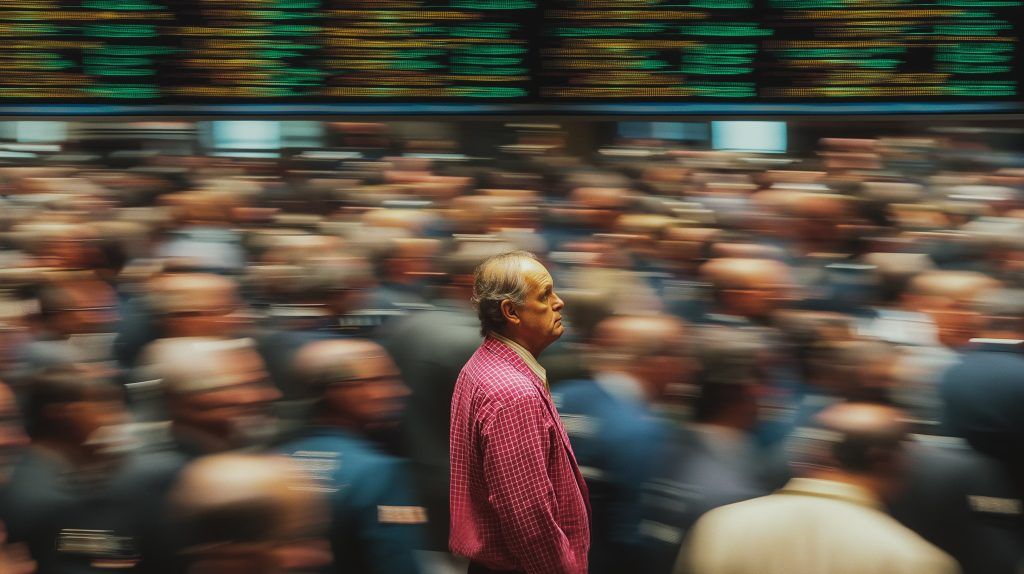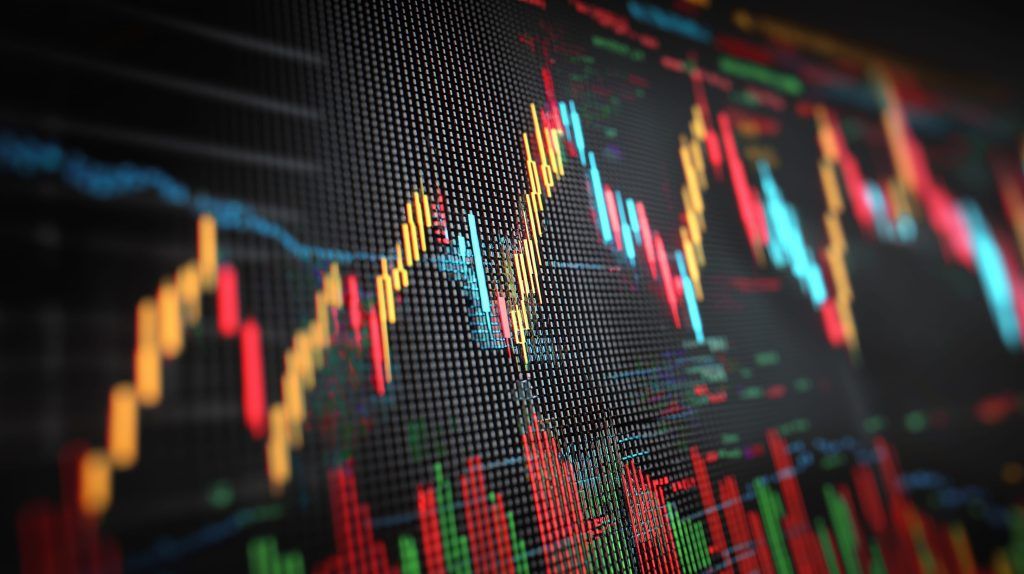South Korea’s stock markets extended their powerful autumn rally on Thursday, Nov. 13, 2025, with both the KOSPI and KOSDAQ closing higher despite persistent pressure on the won and mixed performance from heavyweight tech names.
Trading was held on shortened hours — opening at 10 a.m. and closing at 4:30 p.m. KST — to accommodate the nationwide college entrance exam (CSAT), but that didn’t stop turnover or risk appetite from surging. [1]
KOSPI Closes at 4,170.63, Extending a Four‑Session Winning Streak
The benchmark KOSPI index finished up 0.49% at 4,170.63, gaining 20.24 points from Wednesday’s close and marking its fourth straight advance. [2]
- Intraday range: roughly 4,123–4,180 points. [3]
- Volume: about 421.75 million shares traded. [4]
- Transaction value: around 17.36 trillion won (≈$11.8 billion), a solid level for a shortened session. [5]
The upward momentum came primarily from relief over the end of the record U.S. federal government shutdown, which had rattled global sentiment for weeks. U.S. President Donald Trump signed a funding bill overnight, ending a 43‑day shutdown after both houses of Congress passed the legislation, a move that investors in export‑heavy Korea quickly welcomed. [6]
Overnight on Wall Street, the Dow Jones Industrial Average rose about 1.2%, while the Nasdaq slipped 0.25% as tech stocks digested news that SoftBank sold its remaining stake in Nvidia to fund further AI investments. [7] That split tone fed directly into Thursday’s trading in Seoul.
Sector Snapshot: Shipbuilders and Batteries Soar, While Big Tech Takes a Breather
Thursday’s session in Seoul was a story of cyclical and green‑energy names outperforming mega‑cap tech.
Winners
- Shipbuilding & heavy industry:
- HD Hyundai Heavy Industries jumped about 6%.
- Samsung Heavy Industries added almost 1%. [8]
- Battery and chemicals:
- By broader sector, machinery & equipment (+3.94%), medical & precision instruments (+2.87%) and metals (+2.73%) showed the strongest gains on the main board. [11]
These moves reflect investors’ continued rotation into industries tied to global trade, shipbuilding, and energy transition, even as headline chip names cool off.
Laggards
- Samsung Electronics slipped around 0.29%.
- SK hynix declined 0.81%. [12]
- Among autos, Hyundai Motor managed modest gains near 0.9%, while Kia eased around 0.5%. [13]
Despite recent bullish commentary about Samsung’s medium‑term prospects on high‑bandwidth memory (HBM4) and AI‑related demand, the stock saw profit‑taking after a powerful year‑to‑date advance. [14]
Even with today’s pause in some heavyweights, the KOSPI is still up more than 70% so far in 2025, underscoring how aggressive the rally has been since the spring. [15]
KOSDAQ Outperforms: Index Jumps 1.31% as Risk Appetite Holds
The KOSDAQ, Korea’s tech‑ and growth‑oriented junior market, outpaced the main board:
- KOSDAQ close:918.37, up 11.86 points (1.31%) from Wednesday. [16]
- Open: around 904.36, according to index data providers, implying strong buying into the shortened session. [17]
Beneath the index level, the mood in KOSDAQ is risk‑on:
- A wave of IPOs has ignited speculative interest. On Thursday, newly listed lab‑automation firm Curiosys on KOSDAQ reportedly soared about 300% above its IPO price soon after the open, satisfying the local “따블‑따상 (double‑double)” pattern where shares quadruple relative to the initial offering price. [18]
- Other recent debutants — such as AI optimization player Nota and tech firm Innotech — have also hit exchange limits or rallied sharply, drawing more retail traders into subscription and first‑day trading. [19]
At the same time, stock‑specific research continues to shape sentiment:
- Analysis on KM Corporation (KOSDAQ:083550) highlighted a very low price‑to‑sales ratio around 0.3x, with commentary suggesting that slower medium‑term revenue growth justifies the discount versus the broader medical equipment sector. [20]
- Biotech Shaperon (KOSDAQ:378800) drew attention after announcing preparations for a Phase 2b clinical trial of its inflammasome‑targeted atopic dermatitis drug, underscoring the pipeline‑driven nature of KOSDAQ healthcare plays. [21]
In the crypto‑adjacent space, blockchain firm Parameta (formerly ICONLOOP) made headlines by declaring its intention to pursue a KOSDAQ listing next year, a move seen as further blurring the lines between Korea’s digital‑asset ecosystem and mainstream capital markets. [22]
Foreign Investors Buy 1 Trillion Won in a Day
The single biggest driver of Thursday’s KOSPI move was aggressive foreign buying.
- On the main board, overseas investors were net buyers of about 1.0–1.01 trillion won, more than offsetting net selling by individuals and domestic institutions. [23]
- Individuals dumped roughly 200–240 billion won, while institutions offloaded around 700–770 billion won worth of stocks, according to translated local reports. [24]
Today’s flow fits into a broader pattern of foreign capital returning to Korean equities:
- Central bank data released Thursday showed offshore investors remained net buyers of Korean securities in October, with a combined $2.29 billion in net purchases of stocks and bonds, following an even larger $9.12 billion net inflow in September. [25]
- Within that, foreigners bought a net $3.02 billion of local stocks in October, even as they turned net sellers of bonds. The Bank of Korea attributed the equity inflows to global AI‑themed investment and strong tech sentiment, tempered only by profit‑taking after outsized gains. [26]
The combination of structural foreign inflows and short‑term event relief from the U.S. shutdown helped keep Korean equities supported despite FX volatility.
Won Hovers in Upper 1,460s per Dollar, FX Volatility Still a Threat
While stocks climbed, the Korean won remained under pressure, underscoring a key macro risk that investors cannot ignore.
- At the onshore close, the dollar was quoted around ₩1,466–1,468, according to Seoul FX market data and local press. [27]
- Intraday, the won briefly weakened beyond ₩1,470 per dollar for the second straight day, touching around ₩1,475.3 before paring some losses — its weakest intraday level in about seven months. [28]
Local coverage framed the current level as the “weak end of the 1,400 range”, reviving memories of previous stress episodes:
- An analysis piece noted that the won’s slide is being driven by uncertainty over Korea‑U.S. tariff negotiations, a surge in Koreans’ overseas stock investment (especially into U.S. markets), and a persistently weak yen. [29]
- Another widely read article highlighted how companies are struggling to finalize 2026 business plans because every 10‑won move in the exchange rate can swing operating profits by billions of won, especially for import‑heavy sectors like food processing, ship components, petrochemicals, and steel. [30]
Bank of Korea Governor Rhee Chang‑yong has suggested the FX market may be overreacting to uncertainty and signaled that authorities could intervene if volatility intensifies. [31]
For equity investors, that means:
- Exporters with large dollar revenues may enjoy a profit boost in the near term.
- Import‑dependent small and mid‑size firms could see margin compression unless they successfully pass through higher costs. [32]
Liquidity Surge: Retail Investors, Margin Debt and IPO Mania
Another important undercurrent shaping today’s trade is the sheer volume of domestic money rushing back into equities.
A Maeil Business analysis on Thursday described the KOSPI “4,000‑point era” as a “black hole” drawing in market liquidity: [33]
- The daily average transaction value on the KOSPI in November is about ₩20.31 trillion, more than double January’s level and the highest monthly reading since the 2021 “Donghak ant” retail boom. [34]
- Individual investors’ share of KOSPI trading has climbed back into the 43% range over the past two months, up from the low‑40% range in late summer, as local retail traders rotate back from cash and deposits into stocks. [35]
- Margin debt (credit loans for stock trading) is hovering near a record high, with outstanding balances around ₩27 trillion as of Nov. 12. [36]
The same report noted that more than ₩20 trillion has left commercial banks in a single month, while asset managers have seen a sharp increase in equity fund and money‑market fund inflows, underscoring a broad “money move” toward risk assets. [37]
Banks are responding by raising deposit rates, but analysts quoted in local media expect the shift into equities to continue in the near term, especially while the index stays above the symbolic 4,000‑point line and new‑listing “jackpots” keep capturing headlines. [38]
Regulators Tighten the Screws as Market Alerts Hit a Record
With animal spirits back in force, regulators are also signaling caution.
According to a report citing Korea Exchange (KRX) data, 71 listed companies have been designated as either “investment warning” or “investment risk” stocks so far this year, the highest number on record, reflecting concerns about excessive speculation, abrupt price spikes, and thinly explained rallies. [39]
These designations can:
- Trigger additional disclosure requirements,
- Limit aggressive trading strategies, and
- Serve as a public warning for retail investors chasing short‑term gains.
For KOSDAQ in particular — where small‑cap and concept stocks can move 30% or more in a single session — these warnings are an important backdrop to today’s strong index performance.
Bond Market and Rates: Yields Edge Lower After Shutdown Relief
In the Korean government bond market, price action was relatively calm but leaned slightly supportive:
- Korea’s 3‑year treasury yield hovered around 2.93%, moving only a few basis points on the day.
- The benchmark 10‑year Korean yield sits in the low‑3.2% range, while the U.S. 10‑year Treasury yield fell toward 4.07% overnight. [40]
Lower long‑term yields, especially in the U.S., tend to support growth and tech valuations, even if today’s session in Seoul showed some profit‑taking in large semiconductors.
What Today’s Moves Mean for Investors
For anyone tracking Korean stocks on Nov. 13, 2025, several key themes stand out:
- Risk sentiment is back — but selective.
- The KOSPI is holding comfortably above 4,000, and the KOSDAQ is pushing higher, powered by foreign inflows, shipbuilders, and EV‑battery plays.
- Mega‑cap chips like Samsung Electronics and SK hynix are pausing after a massive year‑to‑date run, especially as global investors rotate and digest Nvidia‑related headlines. [41]
- Foreign money is still buying Korea.
- Overseas investors bought about ₩1 trillion of KOSPI shares today alone and have been net buyers of local equities for months, even as they trim bond exposure. [42]
- FX volatility is the biggest macro risk.
- The won hovering around ₩1,470 per dollar is a tailwind for exporters but a headache for import‑heavy small and mid‑caps — and for corporate planners trying to set 2026 budgets.
- Policymakers are openly discussing the possibility of intervention or increased hedging if depreciation deepens. [43]
- Retail leverage and IPO frenzy are double‑edged.
- Event risk remains high.
- Markets will be watching Nvidia’s upcoming earnings, further details on Korea‑U.S. tariff talks, and any signs of FX intervention by Korean authorities. [46]
For now, though, the story of Nov. 13, 2025 is one of resilient Korean equities: the KOSPI and KOSDAQ both climbed, foreign investors bought aggressively, and the end of the U.S. shutdown provided just enough global relief to keep the rally alive — even as the weak won and speculative fervor flash amber warning lights in the background.
References
1. www.webull.com, 2. en.fnnews.com, 3. www.investing.com, 4. koreajoongangdaily.joins.com, 5. koreajoongangdaily.joins.com, 6. koreajoongangdaily.joins.com, 7. koreajoongangdaily.joins.com, 8. koreajoongangdaily.joins.com, 9. koreajoongangdaily.joins.com, 10. en.fnnews.com, 11. en.fnnews.com, 12. koreajoongangdaily.joins.com, 13. en.fnnews.com, 14. www.theinvestor.co.kr, 15. www.tradingview.com, 16. en.fnnews.com, 17. www.barrons.com, 18. www.mk.co.kr, 19. www.mk.co.kr, 20. simplywall.st, 21. www.businesswire.com, 22. cryptorank.io, 23. en.fnnews.com, 24. en.fnnews.com, 25. koreajoongangdaily.joins.com, 26. koreajoongangdaily.joins.com, 27. koreajoongangdaily.joins.com, 28. www.mk.co.kr, 29. www.mk.co.kr, 30. koreajoongangdaily.joins.com, 31. koreajoongangdaily.joins.com, 32. koreajoongangdaily.joins.com, 33. www.mk.co.kr, 34. www.mk.co.kr, 35. www.mk.co.kr, 36. www.mk.co.kr, 37. www.mk.co.kr, 38. www.mk.co.kr, 39. www.chosun.com, 40. www.tradingview.com, 41. www.tradingview.com, 42. en.fnnews.com, 43. www.mk.co.kr, 44. www.mk.co.kr, 45. www.chosun.com, 46. koreajoongangdaily.joins.com







